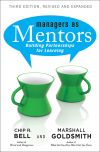Правообладателям!
Представленный фрагмент книги размещен по согласованию с распространителем легального контента ООО "ЛитРес" (не более 20% исходного текста). Если вы считаете, что размещение материала нарушает ваши или чьи-либо права, то сообщите нам об этом.Читателям!
Оплатили, но не знаете что делать дальше?
Текст бизнес-книги "Gordon Ramsay’s Playing with Fire"
Автор книги: Gordon Ramsay
Раздел: Жанр неизвестен
Текущая страница: 3 (всего у книги 4 страниц)
CHAPTER FIVE
CLARIDGE’S
When you find a winner, groom it daily. Protect it with your life.
WHILE WE WERE battling with the problems in Glasgow, two things happened that suddenly shifted us into another gear. In January 2001, Royal Hospital Road received its third Michelin star. It was what I had been working my bollocks off for since I started in my first kitchen, and it broadcast to the world what we were about. It was also to bring the most important opportunity so far, as I was about to learn how to take on a major business challenge, rebuild it detail by detail, and then deal with success on a scale previously unknown to me.
Claridge’s is one of the very few old-style, glamorous places that are the real thing. It has been open since before the Battle of Waterloo, and it was among the first establishments to introduce French cooking to Regency London. The Prince Regent had a permanent suite there. And it was from Claridge’s, out of the blue, that we received another one of those phone calls with an invitation to talks about running its restaurant.
Ironically, Claridge’s new owners, Blackstone Private Equity, had been the very people who had delayed the launch of Royal Hospital Road. I had no idea back then, of course, that they would come to be such an important part of my life.
From the moment I first heard of the idea, I knew that Gordon Ramsay at Claridge’s was going to take us into a different league. The deal had everything and, in particular, a new word for me: ‘synergy’, the coming together of two bodies whose combined force would be greater than the sum of their parts. Claridge’s from the history books, and me from a council house. Who would ever have thought it? I learned the significance of this little number rapidly.
The first hurdle was to get the new owners into believing that we could handle this operation. The man whom we negotiated with was John Ceriale, a name that would become iconic within Gordon Ramsay Holdings for years to come. I thought of him as a Bronx bruiser with an uncanny vision when it came to bringing old-fashioned, down-at-heel hotels into the twenty-first century. At this point in time, he had only been with Blackstone Private Equity for a year as their hotel real estate manager and had yet to make his name.
Chris got on particularly well with Ceriale. I think Ceriale saw me as the name above the door, whereas with Chris, he could see someone who could put in place a structure that would carry the whole operation. Their first meeting started with the question, ‘Would Gordon be happy to do breakfast in his restaurant?’ Chris is seated there with Ceriale and at least six of his ‘advisors’ and the senior management from Claridge’s. The answer to the question was about to launch a relationship that, in the fullness of time, would provide Gordon Ramsay Holdings with an incredible billion pounds’ worth of turnover in the coming years. A BILLION pounds. No firm in the world would turn that down, and we certainly weren’t planning on stalling over a simple matter like breakfast.
Fortunately, Chris got the answer right. Without a second’s hesitation, he said that that would be no problem and that Gordon would certainly be up for that, knowing full well that chefs just don’t do breakfast. This had been the stumbling block for all previous contenders. How the fuck Chris imagined he was going to smooth this with me became the funniest thing he ever said. He just looked at me and said that, if it was going to be a problem for me, he would cook the breakfasts himself. Chris can’t cook a breadcrumb.
The early days were difficult. It took an age before we finally got the nod, having been made acutely aware that I was probably the last in the line of those chefs whom Ceriale had invited to talks. Perhaps, understandably, he realized my reputation might not sit comfortably with Claridge’s rearguard. There were certainly plenty of people who were ready to confirm that, and although they liked their eggs boiled, they didn’t like the idea of them being ‘fucking’ boiled. I think what worked in our favour was that Ceriale was clearly a maverick and liked me. He had already realized that the rebirth of Claridge’s was not a move to pander to the hotel’s established clientele. What would happen when they were all dead and gone? What he had in mind was a rebirth of this old lady to accommodate the new money of a younger, wealthier generation. He sought to bring glamour by the bucketful, and he did so with top American designers and investment funds that no one had ever dreamed about.
Ceriale made it clear that, before we went any further, he wanted to meet me. He was one of those operators who was guided by his feelings about people. All his consultants were people he liked, and if we were going to secure Claridge’s, he and I would have to connect. I guess that I am a bit like that myself. It is not easy to work with people you don’t like, and it just so happens that I tend to like people who are good at their jobs. I think that it’s also linked to the search for loyalty. You want to feel that someone is with you for a bigger reason than just a pay packet.
It was arranged for Chris to take John and the general manager of Claridge’s to Royal Hospital Road for lunch, and afterwards, I would come into the dining room and meet them. It gave us a chance to show John what we were about. Impress him, maybe.
Lunch was a hard slog for Chris. The general manager, let’s just call him GM as in General Motors – was clearly not on our side. He couldn’t understand change, and yet was swept along by the energy and vision of his new boss. As Chris said, he had reached the pinnacle of hotel management and was now extending a very tentative toe into hotel realignment. But a step, perhaps, too far for him.
So these two pumped Chris for all he was worth during lunch, asking him all the questions and expressing their doubts about how I would appear as the spearhead for the new restaurant. Both Chris and I knew that I was, without doubt, the right choice, but, for the new owners, there were big bucks riding on the correct decision, so nothing was going to be decided there and then.
As I entered the dining room, I saw the three of them sitting in the corner. Chris did not look happy, and I was thinking that maybe things were not moving in the right direction. We all shook hands, and I could see at once why Chris was so impressed with John Ceriale. He is not tall, he is thinning on top to the point of balding, and he is straight out of the Mafia’s family album. He was dressed immaculately, with blue suit, cufflinks on double cuffs, and a quiet tie. I wondered if I should be kissing his hand. ‘Hey, Gordon, nice ta meet ya.’ He told me that he enjoyed lunch and that he was hoping we might do some stuff together with Claridge’s. He was definitely twitchy, and I saw his eye land on a waiter who had joined the company only a week before. ‘Haven’t I seen him before?’ he asked. My heart sank, as I knew that we had snatched this boy from Claridge’s. ‘Have you been stealing my fuckin’ staff, Gordon? Is this what you do over here? Is this how you operate?’ The man was all over me, and I saw Chris shifting from one foot to the other like he was trying to run through a trough of honey. GM was also uncomfortable with the way the conversation was going. More like a good slapping than a conversation, I was thinking. GM was chewing his top lip like there was a sticky wart on it.
‘If you don’t like me, Gordon, I’m outta here. Do you want me to fuck off out of the restaurant?’
Jesus! What have I done here? I looked at him and it just came out. ‘Yes, he came over from Claridge’s,’ – GM was looking on stonily – ‘and he tells me that the staff have a picture of the new owners on their dartboard. He says that your head has the most holes in it. Why is that, John?’
He looked at me, and the whole of Royal Hospital Road had a frozen moment. ‘Hey, is that so? They stick more darts in me than any other fella? Fucking brilliant.’ And with that, he laughed aloud, grabbed my hand and shook it like we’d been the best of buddies for years. I wondered afterwards what prompted me to say that. It was pretty dangerous stuff, and I can only think that either I was getting angry with this man for talking to me in my restaurant as though I was a criminal, or I just wanted to show him that we could toss in the occasional Molotov as well.
Somehow, although I was not sure as they left immediately afterwards, I thought we had made progress.
Our deal was eventually struck, and we got control of the dining room and kitchen. Blackstone paid for the design and refit in return for 11 per cent of our turnover by way of rent. Maybe a high rent, but just look at what we were getting: a beautiful dining room in the heart of Mayfair with all the glitz that was about to come shimmering through the door. Even the kitchen fit-out was paid for, although we had to wade in and replan the whole area after what we considered was a muddled first attempt. In later deals, this became our area of expertise, but that’s another story.
Within the old kitchen, there was a drink dispense area just opposite the main stoves where countless cocktails had been served to the waiting staff to take through to the dining room. It had been in my mind to look for a space to put in a chef’s table, and this looked perfect. A chef’s table was originally just a table in the kitchen for friends of the chef or visiting chefs who would sit down and taste the kitchen’s offerings. This simple concept developed so that guests of the restaurant could also eat in the kitchen and learn more about what they were eating, about the ingredients and how they are cooked. Chris will always maintain that it was his idea, but the idea went up to the Claridge’s management for their approval. They thought the concept hilarious, particularly the GM, and asked what we imagined the turnover generated by such a table of six would be. ‘Probably around £440,000 a year,’ Chris replied. They continued to laugh, but we got our way, and a year after opening it, had turned over £500,000 – probably more than Claridge’s Royal Suite took in.
The Chef’s Table became a trademark of our operation, and is a feature in nearly all of our restaurants. It makes great commercial sense. For years, guests never dreamed of coming near a commercial kitchen. Suddenly, everyone is interested – not just in food, but how it is put together, and its production has become theatre. The chefs love it when they see guests interested in what they do. Very often, they will invite the guests to the stove to help stir a pot or dice a shallot. The table is a great revenue source, and, occasionally, tips are exceptional – as once witnessed when the three ladies of a particularly lively Chef’s Table stood up and bared their tits in gratitude. The brigade cheered and the evening became buried in folklore. Unfortunately, it was my day off.
The Chef’s Table is also the guarantee of total hygiene. Everyone working in the kitchen knows that clean is not enough. It has to look as it did on the day it opened. Shine, polish, burnish, sparkle – the whole nine yards. No fucking excuses.
The opening of Gordon Ramsay at Claridge’s was delayed by three months. It would have been inconceivable originally, but the combined noise of drilling and the preciousness expressed by hotel guests made the original opening date of July an impossibility. This had an unexpected benefit.
The taking over of Claridge’s restaurant had brought to my attention the concept of TUPE, the Transfer of an Undertaking Protection of Employment. In essence, this meant that anyone employed by a going concern, company or business was automatically transferred as an employee to the new owners or employers, irrespective of how the transfer of the business took place. Sounds reasonable in the first instance – until you realize that you may be taking on employment liabilities relating to people with thirty years’ service. In the case of Claridge’s, there were something like eighty such employees, and this was a real concern. Not only had they been around this establishment for years, but during that time, they had taken on personas that would in no way suit the operation that we had in mind.
What I didn’t realize was that they were as nervous about coming on board as I was about their existence. The easy life of serving twenty or so guests at lunch or dinner was about to come to an end. We were already working on 120 guests for lunch and 150 in the evenings, and word was out on what we expected from our staff. With this in mind, forty of the transferees had already tendered their notices and were on their way to pastures new or, perhaps, just out to pasture. With the announcement of a September opening, the others threw in the towel, every single one of them, and we were free to start afresh. Thank you, God.
For John Ceriale, there were always three fundamental components in opening a successful restaurant: the location, the chef and the design. Well, we certainly had the location, and the kitchen was never going to be a problem. The design – or, rather, the designer – was the ace up John Ceriale’s sleeve. Tucked away in an old converted cold store in New York’s Tribeca was Thierry Despont, who was given the commission to not only bring Claridge’s foyer into the new age of old elegance, but was also charged with the design of my new restaurant.
Claridge’s restaurant had been on the ground floor on the west side of the hotel for 100 years and had probably never turned a profit. It was a mausoleum – a huge, high-ceilinged cathedral where tail-coated waiters had pranced between the tables, dispensing arrogance and superciliousness while serving plates of grown-up school dinners. The task facing any designer would be daunting. It was easy to throw out the aspidistras and Victorian bric-à-brac, but all that was left was an echoing cave large enough to hangar a jumbo jet.
One winter’s day, we found ourselves in Tribeca about to meet the man who was going to change all that. His cold store had been transformed into an amazing five floors of sample rooms, drawing desks and Apple Macs. He was a tall, nasal Frenchman with a confidence and arrogance that I liked. Moreover, he was someone who listened to us when we started on the long list of considerations that he would have to take on board. He presented a three-dimensional concept of what he had in mind. Fucking breathtaking, as we sat and watched. This was the guy who spruced up the Statue of Liberty on its 200th birthday, and now he was about to design my new restaurant.
You may remember that, earlier on, I thought that the Claridge’s challenge was about to launch us into a different league and, in doing so, it would introduce me to a whole new world of international travel and an involvement with people who think in global terms. You know that I am already beginning to understand that this will become the template for the years to come, and I am shitting myself with excitement.
The deal to take this over was as simple as ABC. The owners were to pay all the big bills. The megabucks that were needed to make it happen came from them. All I had to do was find the money to supply the china, the silver, glassware, the ‘tabletops’, the staff uniforms, the kitchen equipment and a little working capital. I say ‘a little working capital’ because, of course, when the restaurant opened, money started to come in on the first night, even before the last table was crumbed down. That meant we had thirty days before we had to pay the staff and sixty days of income before having to pay a supplier. Chris, who had come from a thirty-year career in printing, reminded me that he had to wait between sixty and 120 days for his money in his previous life. The only thing that spoilt this positive cash flow arrangement was having to pay three months’ rent in advance, provide a minimum of £100,000 in authorized and paid-up capital, and arrange a letter of credit from the bank to cover a quarter’s rent in case of default. In addition, we paid 11 per cent of our net takings to Blackstone by way of rent. As I said, easy as ABC.
The negotiations over the drafting of the lease and the operating agreement went on forever. Chris spent hours in meetings with marked-up drafts going backwards and forwards. What we didn’t realize then was that the format was to become a way of life for the two parties, and was to be used for a further twelve restaurants at the time of writing this. And that’s simply because we got it right at the beginning.
The restaurant build seemed to take forever. It did, however, give us time to recruit the right staff, train them and make sure that everything was in place, ready for the big opening. It was time to acquaint ourselves with systems and procedures, which, in the coming two years, grew into Gordon Ramsay Holdings and set the stage for three new openings a year for the following five years.
The opening night was a glitzy affair – a real ball for all. The restaurant was cleared of tables and chairs so that over 500 guests could enter through the magnificent foyer of Claridge’s to see the fabulous transformation of the mausoleum. Outside along the kerb were half a dozen nineteenth– century hackney carriages, each with a pair of horses with their noses in their feedbags – right back to when Claridge’s first threw its doors open to the public. The press boys were everywhere, and even then, on that very first night, before the till had even rung up once, I knew that we had just broken through rock and found a vein of gold. John Ceriale, a shy man when it comes to the public, was there to see the launch of his baby with a grin the size of the Brooklyn Bridge.
That is not to say that Gordon Ramsay at Claridge’s proceeded without a hitch. In the first year, we bottom-lined at £600,000. The second year was much the same. But in the third, we closed the year off at £1.65 million and then went on to reach close to £2 million in each successive year, and that must tell a tale.
The first year was hard. We were soon receiving, on average, sixteen letters of complaint a week, and something had to be done about it. The weekly operations meeting was born, which was no more than a meeting of the restaurant director, his managers, the head chef and his lieutenants, the head receptionist, the HQ heads of department from HR, training and private dining, and either Chris or myself to chair the meeting. They were often merciless meetings in our search for perfection. I recall one week when there were eighteen people all sitting in a large circle without a table to hide behind, and one of the receptionists, a fat, self– contented moose, smirked after admitting that she had lashed up on a booking. The smirk drained away as it was pointed out that, as she had risked jeopardizing the GR name with her recklessness, she could now leave the room, leave the company, and never be heard of again. And that is exactly what happened. Amazing, after that, how we had everyone’s undivided attention.
So, what happened during the first two years that added a million pounds to the bottom line? Why did that not happen from the beginning? Surely there was a simple enough formula here of booking guests in from an apparently endless list of reservations requests, offering the same menu each day and washing the dirty plates at the end of each service. Most restaurants would have given their eye teeth to make £600,000 a year, but we knew that there was an opportunity to fine-tune every area of the operation, leading to bigger bucks and true longevity for the restaurant.
The single most effective step was to introduce profit and loss numbers to the kitchen management. Chefs are not normally numbers people, but I saw how they sat up when Chris alluded to the information that the office could pick up from the kitchen’s activities just from the food margins, the primary indicator of how much was spent on ingredients, compared to the amount of food sales. If the chef carried on buying Welsh lamb when the prices went up without increasing the menu price or switching to Pyrenean lamb, his monthly food margin would drop a couple of points, and the office knew there was a fuck-up somewhere. The menu stayed more or less the same and, therefore, the food margins did not falter.
As the kitchens began to understand the importance of buying intelligently, turning stock and charging in accordance with market costs, a bonus system was introduced in accordance with performance. As such, it represented financial rewards for doing the job right. Commission or bonuses are nearly always associated with sales or deal making, and it just seemed right that safeguarding aspects of the bottom line also deserved reward and motivation to keep going along that track. This had to be carefully watched, as the last thing I wanted was overkill when margins rose at the expense of quality. That was not the idea. It’s just that, when I think back to Royal Hospital Road, it was always our boast that we never bought on price, just quality and timely delivery.
The other essential indicator was salary costs as a percentage of sales. There had to be sufficient staffing, but not over-staffing. Also added into the formula had to be the training and retention of staff. When commis enlisted and then left in less than six months, we came up with a bonus system, whereby those staying for a year earned a one-off payment at the end of the term. This immediately had anyone thinking twice before throwing in the towel.
The art of upselling is a sensitive but necessary subject. There is nothing more irritating than when a table is approached half a dozen times and asked if they want water. Once is fine, and the question has to be asked. After that, it is vital that an indicator is left on the table so that any further approach is avoided. Either remove the water glasses if it was ‘No,’ or place a bottle coaster on the table to indicate that a bottle is already on the way. So simple.
Successful and intelligent upselling is bringing to the guests’ attention something that they want, but just hadn’t thought about. Sit a party down at the table and ask them what they may like to drink, and there will be total confusion. Particularly if the guests don’t know each other. Suggest the champagne trolley, and you’re home and dry. It cuts across the whole problem for a guest who doesn’t want to be the first to choose. And, in the meantime, you kick off with six glasses of pink champagne on the bill at £9.50 a glass, with six happy guests who are beginning to realize that they are going to enjoy themselves.
Statistics on the Gordon Ramsay at Claridge’s scale did my head in at the beginning. At Claridge’s, we agreed to put £1 on every bill in the months of November and December for a London charity called StreetSmart. The proceeds were to go to London’s down-and-outs, and we, in fact, decided to extend this to six of the restaurants. So, how much did £1 a table produce in those two months for six little restaurants? Something in the region of £23,000. That means that we served 23,000 tables – not guests – in sixty-one days. Extend this to the number of feet belonging to all the guests (allowing an average of two feet per guest) that make up these tables, and you begin to understand why we need a twenty-four-hour maintenance team, why we need to replace the fucking carpets every three years, and why, unless you do this, the place will wilt like a lettuce leaf at Ascot.
What do guests look for more than anything when entering a restaurant? What they want is attention. They want to see a smile, an acknowledgement, a welcome the moment they enter, and the average restaurant is fucking crap at this simple courtesy. Either you are completely ignored and staff at the reception desk carry on talking among themselves, or someone challenges you with ‘Name?’ And on giving your name, they repeat it like a fucking automaton, without so much as a ‘Mr’ or ‘Mrs’. Their attention then flicks down the reservations list, and they proceed to highlight the name in Day-Glo green or rub it out like a gleeful schoolgirl, fresh from a shoplifting spree at Office World.
People in a restaurant see it as their chance for recognition. Give them a warm, welcoming smile. Get their name right with the appropriate title, and make it sound like you are really pleased to see them. They are already flushed pink that they are recognized and have your undivided attention. A good restaurant manager understands this, and ensures that his staff are drilled to follow these simple rules. For Christ’s sake, the guests’ satisfaction is what your job is all about. Get it wrong and you will hear no more because there won’t be any guests left.
Once past the desk, the guest is now looking out for two things: which table he’s going to get and whether any of the other guests are looking and thinking, ‘a regular’ or ‘Who is this git who’s getting the special stroking?’ All part of the service, and still not a menu in sight.
So, in the early days of Gordon Ramsay at Claridge’s, we decided to do something about the smile factor. I guess it stemmed from a remark that Chris made when he was asked what qualifications he had to run restaurants. He just looked up and said, ‘I eat in them.’ You see, what was going around in his maze of a brain was that chefs and waiters only see what they do from their own positions. They come through college, tiny kitchens and bistros, and never get to see the wider picture. I think it’s called one-dimensional. So what I decided to do was invite our own staff to experience their own restaurant. Get done up, bring their nearest and dearest, and have a good time. They’ll soon get pissed off if they are kept waiting for the main course or they have to pour their own wine or they have to try and understand what Zolga, the waitress from Latvia, is trying to say about the menu. It’s an advanced education so that they actually know what it feels like when things go wrong. Why don’t air crews get nervous when the wings on their planes flap hysterically in turbulence halfway across the Atlantic? They stay calm because they have been shown that the plane is built to survive, even when concrete blocks are dropped on it.
And that’s what knowledge and understanding in Gordon Ramsay at Claridge’s brought me. What we achieved as a team became an amazing success story. Ultimately, it depended on the little things like the smile people get when they come into our restaurants and the understanding of our guests’ expectations gained first-hand by our staff. As ever, it is the detail that counts.
Правообладателям!
Представленный фрагмент книги размещен по согласованию с распространителем легального контента ООО "ЛитРес" (не более 20% исходного текста). Если вы считаете, что размещение материала нарушает ваши или чьи-либо права, то сообщите нам об этом.Читателям!
Оплатили, но не знаете что делать дальше?




